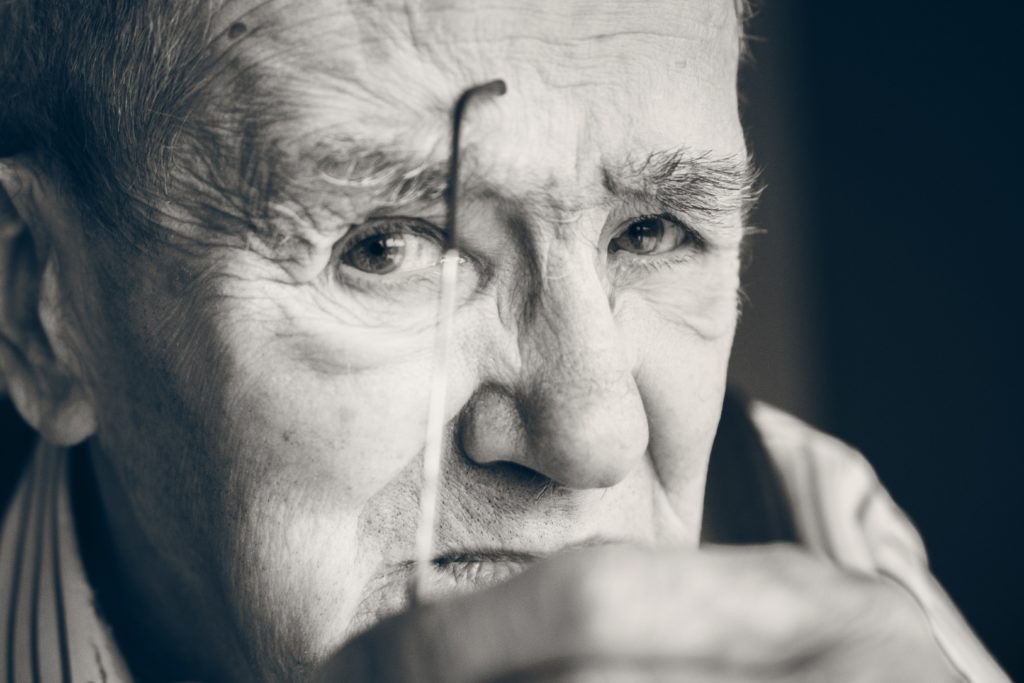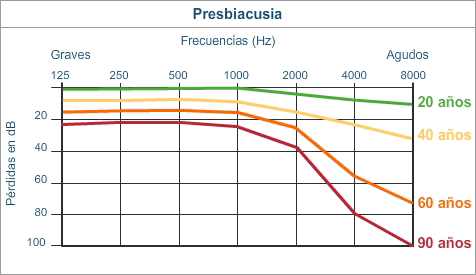Presbycusis or age-related hearing loss gradually occurs as we grow older. In this article, we explain its causes and possible treatments.
What is presbycusis?
The term presbycusis comes from the Greek presbys, meaning old, and akousis, meaning hearing. It can be defined as the progressive loss of the ability to hear high frequencies resulting from the degeneration of the inner ear and the auditory nerve, and is mainly due to ageing.
According to the National Institute on Deafness and Other Communication Disorders (NIDCD) in the United States, age-related hearing loss is, in general, a sensorineural disorder.

It is the most common cause of hearing loss and the main neurodegenerative disorder among the over-65s, affecting up to 40% of people in this age group, according to the Fundación General CSIC.
While ageing is the main cause of this hearing disorder, secondary causes include:
- Environmental factors
- Injury and trauma
- Prolonged exposure to noise
- Ear infections
- High blood pressure
- Diabetes
- Ototoxic drugs (medication that harms the sensory cells in the inner ear).
Types of age-related hearing loss
Age-related hearing loss can be classified into several different types, depending on:
1. The structure that has been damaged:
- Sensory presbycusis: atrophy with with loss of the outer hair cells in the organ of Corti (a structure in the cochlea that produces nerve impulses in response to sound vibrations).
- Neural presbycusis: the loss of spiral ganglion cells (which are responsible for sending a representation of sound from the cochlea to the brain) and nerve fibres in the osseous spiral lamina (a bony ledge in the ear canal).
- Metabolic or stria presbycusis: this results from atrophy of the stria vascularis, which provides the blood supply to the inner ear. It may be hereditary, and is more common in women.
- Mechanical or cochlear conductive presbycusis: caused by a thickening or stiffening of the basilar membrane, which supports the organ of Corti, and damage to the spiral ligament.
- Central presbycusis: this is brought on by a series of histopathological changes (alterations to ear tissue other than the cochlea or auditory nerve).
2. Its progression over time:
- “Normal” presbycusis: this appears gradually and naturally from the age of 60 – 65.
- “Accelerated” or “precocious” presbycusis: hearing loss can be accelerated due to excessive and prolonged exposure to intense sound.

Treating age-related hearing loss
In most cases, age-related hearing loss is unavoidable, although we can take steps to reduce or slow its progression by avoiding exposure to noise. Cardiovascular disease and its risk factors, such as diabetes mellitus, can also have an effect on hearing loss.
However, while taking care of your health, doing exercise on a daily basis and following a healthy, balanced diet can help to reduce future damage to your hearing, it cannot be reversed.
The most common treatment for age-related hearing loss is the use of a hearing aid, which should be programmed and calibrated to suit each person’s specific needs.

Photo credit: óptica hispano
What can I do if my friends or family have age-related hearing loss?
- Speak loudly and clearly, without shouting.
- Speak facing the person and make sure there is enough light for them to be able to see your gestures, read your lips or see your facial expressions.
- Do not cover your mouth with your hands or any objects.
- Minimise ambient noise: turn down the volume of the television set or music, close the windows, etc.
- Do not eat and talk at the same time.
Do you have any other tips on communicating with someone with age-related hearing loss? Leave us a comment at the end of the article – we would love to hear from you.
If you think that someone in your circle may be suffering from age-related hearing loss, encourage them to visit their medical specialist to find out which treatment best suits their needs.

0 Comments
3 Pingbacks